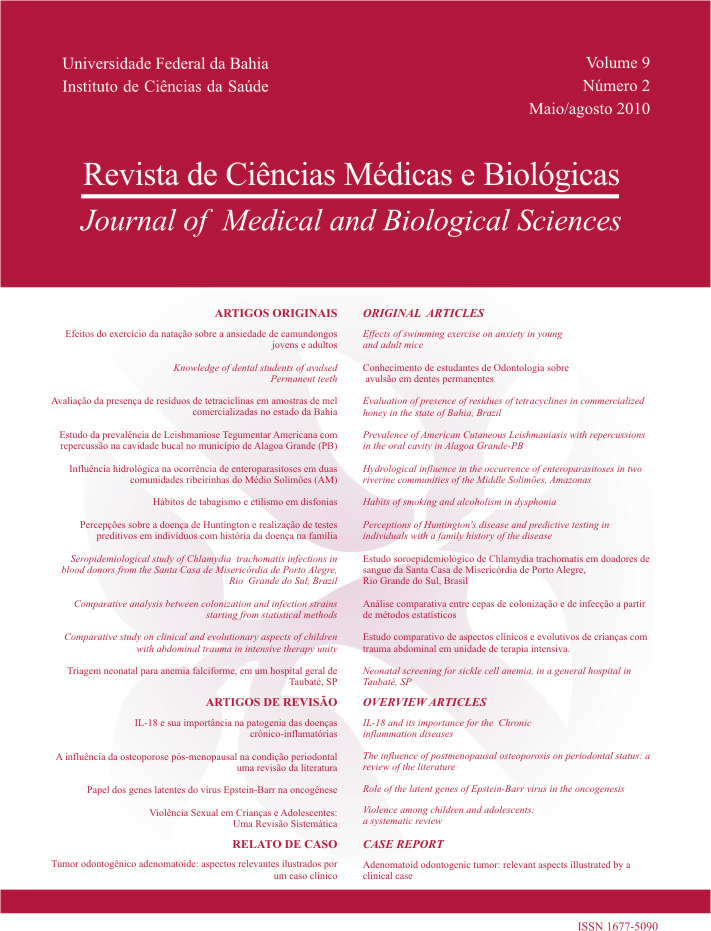Comparative analysis between colonization and infection strains starting from statistical methods
DOI:
https://doi.org/10.9771/cmbio.v9i2.4946Palabras clave:
Colonization and infection strains - Comparative analysis - Surgical patients.Resumen
Isolated colonization strains of preoperative patients were compared with isolated infection strains of surgical patients, seeking to establish compatibility relationships that can suggest a possible common origin between them. Sixty preoperative patients from Hospital Universitário Pedro Ernesto, Rio de Janeiro, Brazil, that have used cephalotin as pre-surgical prophylaxis, were studied as to the intestinal, oropharyngeal and cutaneous colonization for cephalotin-resistant bacteria, using selective culture media. The infection strains were studied through antibiogram analysis of other 2005 surgical patients from the studied clinics. Statistical methods such as Qui-square and Mann-Whitney U tests were employed for comparison of strains as to frequencies of species and numbers of resistance markers to antimicrobials. The cephalotin-resistant microorganism infections represented 62,8% of the infections detected in the 2065 patients. The average number of resistance markers to antimicrobials was higher for the cephalotin-resistant strains. There were no significant differences between colonization and infection strains when compared to frequencies of species and number of resistance markers, for most of the microorganisms. There were significant differences in the number of resistance markers among susceptible and cephalotin-resistant strains of Escherichia coli isolated of urinary infections. Cephalotin has proved to be an effective marker for the detection of multiresistant strains. The results indicate the possibility of microorganism populations that colonize inpatients to be related to microorganisms that cause infections in these patients.Descargas
Los datos de descargas todavía no están disponibles.
Publicado
2010-01-01
Cómo citar
Melo, S. A. da C., Castro, E. A. R. de, Ponce-de-Leon, A. C., & Pereira, J. A. A. (2010). Comparative analysis between colonization and infection strains starting from statistical methods. Revista De Ciências Médicas E Biológicas, 9(2), 133–138. https://doi.org/10.9771/cmbio.v9i2.4946
Número
Sección
Artigos originais
Licencia
A Revista de Ciências Médicas e Biológicas reserva-se todos os direitos autorais dos trabalhos publicados, inclusive de tradução, permitindo, entretanto, a sua posterior reprodução como transcrição, com a devida citação de fonte. O periódico tem acesso livre e gratuito.






